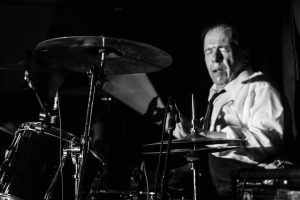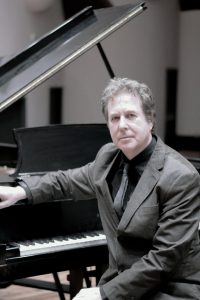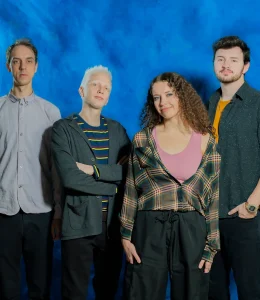By David Fawcett
[Originally published on Fawcett’s Composer’s Notebook website]
Recently, I had a phone call from the Hamilton Philharmonic enquiring why I had subscribed to fewer concerts this season than last. I explained that the season was very heavy on pops concerts, and I prefer to attend concerts of real orchestral fare. The caller seemed satisfied. Perhaps this was not the first time she had heard this explanation.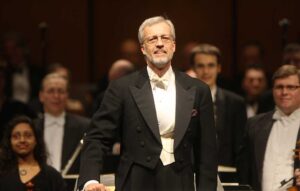
| Ivars Tourins Photo: Dax Melmer/The Windsor Star |
Having said that, I am pleased not to have the job of programming orchestral concerts in this market. There’s a segment of the audience, young concert goers and, perhaps, occasional ones, and regular but conservative ones who would be happy to hear the same standard 19th C. works over and over again, and will shell out for pops concerts, of whatever ilk.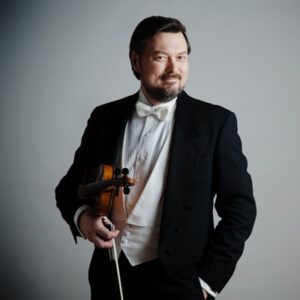
| Stephen Sitarski Photo: stephensitarski.com |
There are otherwise more discriminating concert goers (you may substitute a more disparaging descriptor) like me who really don’t want to hear the 1812 Overture or Beethoven’s Fifth again, concerts of operatic bleeding-chunks or orchestrally accompanied pop songs.
Programming for such diverse potential audiences must be a nightmare but, sometimes, all’s well that ends well.
| Chau Luk Photo: hpo.org |
We went, last night (Sat. Nov. 29), to hear the Hamilton Philharmonic play an all-Mozart concert under the baton of Ivars Taurins.
The framing works were familiar ones; the Overture to Abduction from the Seraglio and the Symphony #40 in G Minor. It was the middle one which brought me to the concert, the Sinfonia Concertante in Eb for Violin, Viola and Orchestra. It’s a work which I had never encountered before in concert or recording.
Whatever misgivings I had before hearing two very familiar pieces, no part of this concert was disappointing.
The Abduction Overture is one of the Mozart’s shorter opera overtures. It is largely composed of melodic material that actually occurs later in the singspiel, like a Broadway overture. It features tympani and three percussionists who contribute the Turkish flavour that was so in-vogue at the end of the 18th C.
The orchestra gave it an exciting performance of the work and it was an ideal opener.
The Sinfonia Concertante is, at about 30 minutes, as long as the symphony which comprised the entire second half of the concert. It featured as soloists HPO Concertmaster Stephen Sitarski and Principal Violist Chau Luk. The orchestra was reduced to 18 strings and a pair each of horns and oboes very like the orchestras of most of the Haydn symphonies.
It is a delightful piece and one can actually hear the difference in style of a work which was intended for a Paris orchestra and audience rather than Viennese ones. Taurins described it as a duet between soprano and alto voices but much of the imitative interplay between the soloists was at the octave so it was, to my ear, more like the soprano and tenor duets from the operas, between Constanze and Belmonte for example.
The soloists played beautifully and there was a nice sense of interplay between them. The violin projects better than the viola in this context, a consequence of register and acoustics rather than the actually volume the instruments produce, so the viola was sometimes harder to pick out of the texture than the violin. The soloists play elaborated versions of materials which is introduced in orchestral tuttis and I was impressed to see the basses playing sixteenth note passages in unison with the cellos at the same pace as the soloists.
Sitarski and Luk returned to their places in orchesta for the second half Symphony. Taurins’ tempos are brisk. I don’t recall hearing the third movement Minuet played as quickly, with a contrasting slower tempo in the trio. He brings almost exaggerated dynamic contrasts and obviously strives to highlight important lines in the inner voices.
This conductor dances around and gestures rather more than we usually see at the HPO whether for his benefit, that of the players or of the audience I can’t say, but he was certainly effective. He attempted to conduct the symphony with only a little break between the movements and, even though he gestured to the audience, some insisted on applauding after each movement, even the slow one. He also, alas, likes to talk.
It was, altogether, a very satisfying concert.
For my Hamilton readers, we have a very good professional orchestra and, as I keep hearing, much better than one would expect for a market this size. The Hamilton Place Great Hall is an excellent concert space. As noted above, many of their concert offerings are approachable to those who aren’t usually orchestral concert goers. Tickets start at $10.00. Please support our orchestra.


